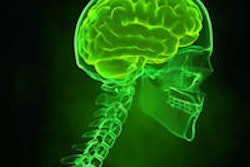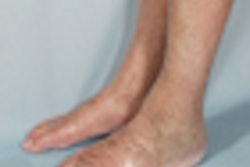
Everybody involved in intravenous administration of iodinated contrast media must be well-versed with the evidence-based literature to optimize image quality and minimize the risks to patients, particularly when dealing with pregnant women, according to new research presented at RSNA 2012.
Most hospitals in developed countries have policies on safe use of contrast media, but there is a wide variation in standards of practice in the developing world and in smaller centers, noted Dr. Sameer B. Raniga, a radiologist from Khoula Hospital, Muscat, Oman. Furthermore, the practice of safe use of contrast at many institutions is anecdotal rather than evidence-based.
"Many research/review articles, meta-analysis, systematic reviews, and international radiology society guidelines are available, but some differences in the recommendations do exist," he noted in an e-poster that was awarded a certificate of merit. "Randomized controlled trials, systematic reviews and meta-analyses may, like any other analytical research tool, have significant weaknesses ... High quality randomized controlled trials, systematic reviews, and meta-analyses are not available for some of the addressed issues."
Increasing use is being made of intravenous iodinated contrast media, predominantly in CT and x-ray examinations, and the evolution of multidetector CT scanners and the significant rise in CT indications in clinical decision-making have had a major impact, Raniga explained.
The radiologist and referring physician must assess the patient risk versus the potential benefits of the contrast-assisted examination, as well as the imaging alternatives that may provide the same or better diagnostic information, and staff involved in the administration of contrast must be thoroughly aware about the presentation of reactions and emergency treatment for the entire spectrum of potential adverse events, he continued. A written policy on the safe use of contrast administration should be in place at every radiology department, and an ongoing quality improvement/assurance program is mandatory.
"Pregnancy is not an absolute contraindication for giving contrast agents," Raniga stated. "The radiologist should confirm with the referring physician and document the following observations in the radiology report or in the patient's medical records: the information requested cannot be acquired without contrast administration or via another imaging modality (e.g., ultrasound); the information needed affects the care of the patient and fetus during pregnancy; and the referring physician is of the opinion that it is not prudent to wait to obtain this information until after the patient is no longer pregnant."
Intravenous iodinated contrast administration to the mother is considered safe for both the baby and mother, and it is safe for women to breastfeed after receiving contrast media, but mothers should be informed of the theoretical risks of direct toxicity or allergic reaction, he noted. Mothers who are breastfeeding should be given the opportunity to make an informed decision as to whether to continue or temporarily abstain from breastfeeding after receiving contrast. Abstain from breastfeeding for 24 hours, with active expression and discarding of breast milk from both breasts during that period, suggested Raniga.
Informed consent must be obtained, and the potential risks of iodinated contrast and radiation exposure and the potential benefits of the examination should be discussed with the patient, along with any diagnostic alternatives. Because of the theoretical risk of thyroid suppression in the fetus, thyroid function should be measured in the first week after birth, he concluded.



















